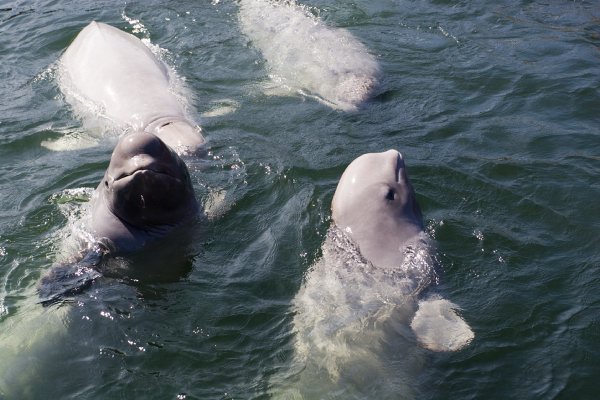How Can We Help Beluga Whales?
Everything you need to know about the future of beluga whale conservation

The first whale I ever saw was a beluga whale. I was perhaps four years old, visiting an aquarium, and stood fascinated by a creature so large, graceful and beautiful. Little did I know I would someday see hundreds of beluga whales in the wild, migrating through the sea ice off the coast of northern Alaska. Nor did I know that I would interview Alaska Native hunters to document their knowledge about the habits and habitats of these animals, thus finding my way into the community of beluga researchers that spans field biologists, aquarium researchers and Indigenous hunters.
Learning More About Beluga Whales
I was privileged to join all these groups as we took part in the second International Workshop on Beluga Whale Conservation and Research. With participants from a half dozen countries, presenting results from many more types of studies, it’s fair to say that everyone learned a great deal. Did you know that belugas can mimic human voices? And, they have complex social lives.
I enjoyed learning more about hunter-led sampling and satellite tagging projects. They have expanded our knowledge of beluga health and migratory patterns. In Svalbard, belugas hug the shoreline and stay very quiet, belying their reputation everywhere else as the “canary of the sea.” The presence of orcas is the most likely explanation—belugas try to remain quiet, to avoid being the orcas next meal.
In terms of conservation, many stories and lessons were shared, too. In the St. Lawrence Estuary of Canada, a small beluga population has survived pollution-related cancers and infectious disease, illnesses that have declined in recent years thanks to efforts to clean the region’s waters. Unfortunately, new pollutants are suspected in a sharp rise in the death rate of belugas giving birth in this region. And increasing ship and boat traffic may create an environment far noisier than the hearing-dependent whales would like.
Belugas in Alaska
In Alaska, only a few hundred belugas remain in Cook Inlet, the waters near Anchorage. Overhunting was blamed for the decline in belugas in the 1990s, but no one knows why the population has failed to grow since hunting stopped. Pollution, excessive noise, reduction in prey, disease and other culprits have been suggested. A combination of all these factors (and more) is most likely to blame. Identifying conservation actions, however, remains difficult in the face of uncertainty in our knowledge and high economic stakes for human uses of the Inlet’s waters.
Beluga Population Sizes Fluctuate
Despite these problem areas, belugas globally are a species of “least concern” according to the IUCN, with a total population of some 200,000 and most stocks in good shape. But climate change and increasing industrial activity leave beluga hunters and researchers uneasy. Small populations of belugas have a hard time increasing in number, perhaps due to some aspects of their highly social behavior. Medium-sized populations could quickly decline from overhunting, large ice entrapments, new diseases, major declines in available prey or other causes. Even large beluga populations can suffer from similar disruptions.
The Future of Beluga Whale Conservation
Continued research is one response to these concerns and to protecting the populations in imminent peril such as Cook Inlet and the St. Lawrence Estuary. There is indeed much to be learned about the whales, their ecosystems and their interactions with humans and human activities.
But we need more than research. We already know a great deal about beluga whales, and we need to put that knowledge into action. Doing so will likely require that everyone involved—hunters, scientists, conservationists, managers—move beyond what is comfortable and familiar, working with both our allies and those who may see things differently. The alternative is for us to stay within our comfort zones while belugas are pushed farther and farther outside theirs.